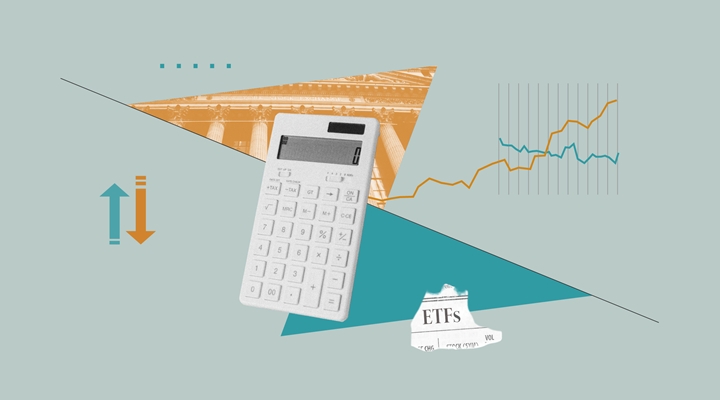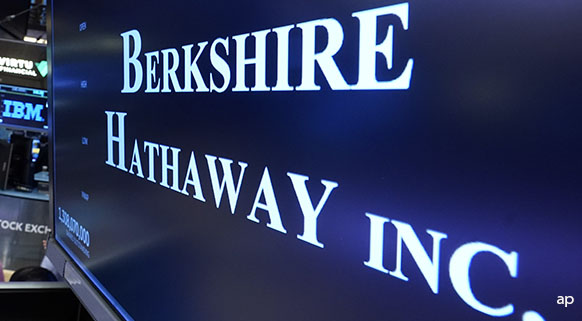TRANSCRIPT
Christine Benz: Hi, I'm Christine Benz for Morningstar.com. How do active funds stack up to passive? Joining me to share some general findings on that topic as well as some rules of the road for making these comparisons is Ben Johnson; he is director of global ETF research for Morningstar.
Ben, thank you so much for being here.
Ben Johnson: Thanks for having me.
Benz: Ben, oftentimes, you hear these comparisons made where you might hear, "Well, 79% of active equity funds have lagged the S&P 500 over the past five years"--or whatever time period it might be. What are the pitfalls of comparing a really broad universe of funds with a single benchmark--even one as broad as the S&P 500?
Johnson: I think the greatest pitfall, or the greatest shortfall, of those comparisons is that they don't really adequately affect investors' reality; they don't adequately reflect investors' opportunity set. So, it's looking at active managers and holding them up against an index, and it's holding them up against a single index. It's important to note that the choice of that index can have a pretty meaningful effect on the end results of such an exercise. And it also holds them up against an index, [which] is really just a theoretical construct. Now, there are index funds that may track that specific index, which I would argue are a more realistic reflection of the true trade-offs that investors face. So, it's important to note that an index, in isolation, does not reflect the costs involved in tracking that index--[granted,] they are often very small.
A more realistic approach to this is looking more holistically at active managers and active strategies' performance relative to passive alternatives with like objectives. So, in Morningstar Categories, for instance, how have active managers in our U.S. large-value category fared relative to all of the various passive options in that strategy? That reflects investors' choices, their opportunity set, and their reality at the end of the day.
Benz: So, you want to be comparing with the appropriate category, and then also be comparing investable [active] fund type versus investable passive fund type.
Johnson: Absolutely.
Benz: So, in addition to that, when you look at active versus index fund performance, you also like to asset-weight the data. Let's talk about what that means, and also what value you think that has.
Johnson: I think the value of asset-weighting the figures as opposed to equally weighting them is that it more accurately portrays the decisions that investors are actually making when it comes to investing in index funds and when it comes to investing in actively managed funds. Now, what you see in terms of the outcomes of asset-weighting relative to equal-weighting is that directionally the results are more favorable. So, what we see is that investors aren't choosing average funds--be their actively managed or passively managed; but what we also see is that the success ratio in terms of investors' choices, or their preferred active funds in a given category, are faring really only marginally better than the average randomly selected fund in a given category. So, they are selecting better-than-average funds, but those funds are only marginally better than average.
Benz: So, when we say asset-weighting, if we asset-weight something in a calculation, we give a greater weight to those funds that have a lot more assets than some tiny fund over here that has $1 million.
Johnson: Exactly. And it reflects where investors are actually invested.
Benz: You keep an eye on this data about how passive alternatives are comparing with their actively managed counterparts, so let's take it asset class by asset class. The numbers move around a bit based on how the market has behaved, but let's start with domestic-equity large-blend funds. When you look at the performance of actively managed funds relative to the index counterparts over various trailing periods, in general, it's not a pretty picture for the active managers.
Benz: No, it's exceedingly difficult to find an active manager in that realm that outperforms. And we're talking about one of the largest, most efficient markets on the planet in U.S. large equities, so it's not entirely unsurprising. Now, what we have seen, incremental to that, is that you can improve your odds of finding winners, not just in U.S. large blend but in any category--be it in actively managed funds or index funds--by looking for the lowest-cost funds in that given category. So, when we cut that data and we look at success ratios by expense quartile and look at the lowest-cost quarter of funds in any given category, their success ratios are incrementally higher than all of the successive quartiles--the remaining three quarters of the funds in that group. So, focusing on fees can go a very long way toward improving investors' odds of picking a winner.
Benz: So, you've used the term success ratios a couple of times. I just want to talk about what we mean by that.
Johnson: So, when we talk about success ratios in this context, we're not talking about how active has performed relative to an index. We're talking about how the average actively invested dollar has fared relative to the average passively invested dollar. So, how many of those dollars--or how many of those funds, in the case of an equal-weighted look--have outperformed the passive alternatives. And it's a composite of the passive alternatives, not just the S&P 500 index, which, again, is theoretical. Not just an S&P 500 index fund, but the entire universe of passive options within a given category.
And we think that, in aggregate, this reflects the opportunities that are available to investors and the decisions that they're making.
Benz: So, this also encompasses the fact that some funds die over time. Some funds go away. Lousy funds don't get any assets and get merged away. This data includes the funds that don't survive.
Johnson: It does include the funds that don't survive. And we've done other research in the past as well to show that, if anything, the most predictive power comes at the long tail, the consistent laggards that exist there in the marketplace, which tend to underperform, tend to be relatively high cost, and tend to either shutter entirely or get merged away over time. So, there's a lot of good information that can quickly lead investors to carve out what's the losing tail of all of this in high-cost, persistently lagging funds as well, which it's been shown have a very high propensity to either be closed entirely or, again, merged into another fund.
Benz: So, I'm wondering how sensitive is this data to the market environment that a particular time period has captured? A lot of the data about indexing shows that the index funds tend to be at their most robust, in terms of relative performance, in periods when their given market segment has performed really well.
Johnson: The odds of beating a passive exposure broadly decrease quite markedly as you expand your time horizon. So, as you go from a one-year look back to a three-year look back to five and then subsequently to a10-year look back, the success ratios for actively managed strategies decrease in sort of regular increments as you look further and further back.
Now, of course, this is also time-horizon dependent. It depends on your start and your end points. So, if we were to look back even further and capture a period a time that spanned from the late 1990s to the present, what we'd see is that [period] might look somewhat different, given that many U.S. large-blend index funds--anything tracking the S&P 500, in particular--was very adversely affected by participating, by definition, in the tech bubble.
Benz: There was a lot of overvaluation at the beginning of that time period.
Johnson: And whereby many active managers were able to sidestep the Ciscos (CIS) and the Pet.coms of the world.
Benz: Right. So, let's take a look at international equity. It's really quite a different story when you look at the data, passive versus active, over various trailing periods. The active managers have made a little better case for themselves.
Johnson: They've made a better case for themselves, certainly. The odds improve really quite greatly, and I think that speaks really to the construction of a lot of the indexes that underlie the passive alternatives. Most of them tend to be market-capitalization weighted. So, what you see are large weightings on foreign markets like Japan or like the U.K. or Switzerland. And active managers, being more [fleet-footed] and not having to hue to the benchmark, can do quite a bit of good by virtue of omission--either underweighting particular markets or particular securities, as well as being more savvy in terms of their sector bets and their individual security bets.
They're competing against these benchmarks that treat a very large, very diverse set of countries in almost monolithic fashion. This is a heterogeneous group, so the index is somewhat disadvantaged in these contexts relative to more [fleet-footed] active alternatives.
Benz: And there are certainly a lot of index foreign funds that track the MSCI EAFE Index--not a lot, but some. And that excludes emerging markets, which I assume has probably been a mixed blessing for the active funds that they can over- or underweight them.
Johnson: Absolutely. So, they are not only more nimble within that opportunity set, as defined by the index, but they can go "off the reservation," as it were, and dabble in unrelated securities or securities that would be incorporated in a different benchmark, which has certainly been to their benefit if you look back over the past 10 years in particular.
Benz: So, fixed income, it's a curious case. There has been a lot written--we've shot videos on this topic--about how many intermediate core-type bond funds don't look anything at all like the index that they are often benchmarked against, the Barclays U.S. Aggregate Bond Index. So, let's talk about that issue before we dive into the data.
Johnson: I think if you look at the average intermediate-term bond fund--you are absolutely right--it's a far cry, in many cases, from its either stated benchmark or the benchmark that we use to assess its performance. Part of that is due to the evolution of the Aggregate Index as it has become more and more either a government- or quasi-government-type index. There have just been massive amounts of issuance coming out of the U.S. Treasury and other entities that are producing securities that have the implicit backing of the U.S. government.
So, it looks like a government/quasi-government bond index; meanwhile, its peers have been feasting on credit now since the worst of the credit crisis and have pretty easily lapped [the Aggregate Index] by virtue of doing exactly that. So, you are measuring a more [fleet-footed] group using an instrument that simply doesn't have the capacity to dabble in those types of securities because it's an index that its peers in that group have been using much to their benefit in recent years.
Benz: So, that mismatch--the constitution of the index versus the composition of many of the active players--makes active management look like a pretty easy bet to make if I'm allocating my fixed-income exposure. When you look at the active-management universe relative to a broader benchmark that encompasses more of the credit-sensitive bonds, let's talk about how active managers do versus what is arguably [a benchmark that is fairer]?
Johnson: I think if you look at--let's put the Aggregate Index aside for moment--the Barclays U.S. Universal Index, which widens out a bit relative to [the Aggregate Index] to include credit-riskier instruments, so some corporate debt, some dollar-denominated emerging-markets debt. What you see is that that's been a much higher hurdle for the actively manage peers in the intermediate-term bond category because it's more representative of the types of securities that they've been buying for their portfolios.
It underscores [an important point]--and you can see this in the data, too, because not all passive strategies, not all benchmarks, are created equal. It underscore that understanding benchmark construction, understanding how reflective an index is of the opportunity set that's available to active managers in a given category is going to go a very long way toward defining whether or not it will look more or less successful relative to an active strategy.
Benz: That's a great point. Last question for you, Ben: That Barclays U.S. Universal Index, is that an investable product at this point? Can I buy some sort of ETF or fund that tracks that index?
Johnson: Yes. So, iShares has recently launched, as part of their core series of ETFs, an ETF that tracks the Universal Index--the ticker is IUSB. So, again, it tracks that broader benchmark that includes that increment of credit-risky securities that is bolted on to traditional aggregate exposure.
Benz: So, having that exposure has helped recently. It may not help going forward, but it certainly has been beneficial for active funds.
Johnson: Absolutely.
Benz: Ben, thank you so much for being here to share your insights.
Johnson: Thank you.
Benz: Thanks for watching. I'm Christine Benz for Morningstar.com.





















